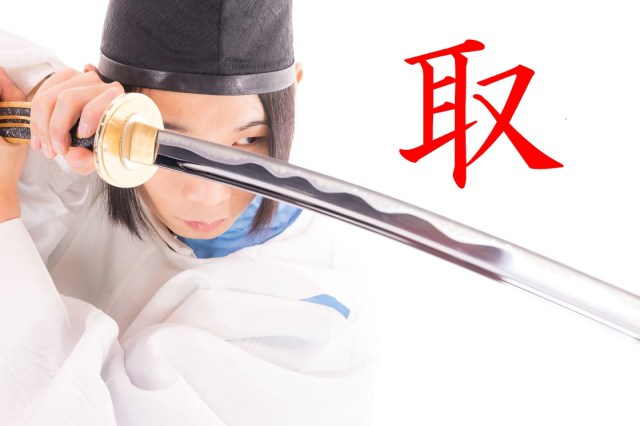
Commonly used kanji’s components don’t make a lot of sense nowadays, but once upon a time…
The Japanese language has three types of writing, and kanji are by far the most difficult. There are more than 2,000 kanji characters to remember, and that huge number is a daunting goal not just for foreigners learning Japanese as a second language, but for kids growing up in Japan as well.
But while learning kanji is always going to be a challenge, there’re a few ways to make it more manageable, and one of the best is to look for ways to break a single kanji down into its component parts. For example, the kanji character for “rest,” seen here…
…becomes easier to remember if you already know that 木 is the kanji for “tree,” and the left portion of 休 represents a person. In other words, the kanji for “rest” is a picture of a person leaning against a tree, taking a break and relaxing in the shade.
So yeah, kanji can be tough, but the more you learn, the easier they get…at least that’s usually how it goes. However, you might find yourself scratching your head when you come to the kanji for “take…”
…since the left half is pretty much the same as the kanji for ear.
But maybe things instantly make sense when you add in the right half of 取? Not really, since the right portion means “hand,” making 取 a visual representation of “holding an ear.”
And it’s not like the metaphor is “grab someone by the ear to take them somewhere with you” either, since that meaning for the English word “take” (i.e. forcibly leading someone somewhere) is a completely separate word/kanji in Japanese (連). No, 取 is strictly for the idea of willfully obtaining something, but why is it the concept connected to ears?
Because long ago, if you were a soldier on the field of battle, and you wanted to bring proof back to camp that you’d killed a bunch of dudes, you’d cut off the ears of your fallen foes.
▼ It was, after all, an age where far more people had swords on them than camera-equipped phones.
With “take” being such a necessary, fundamental communication concept, and kanji having been in use for centuries, originally in China and later in Japan, 取, and the reason it’s written the way it is, aren’t new linguistic developments. 取 is one of the most commonly written/typed kanji, though, and with its components themselves being fairly simple and easy to remember, many Japanese people haven’t really bothered to dig into its conceptual origins. Recently, though, Japanese Twitter user and linguistics tutor @tutor_gonta brought the violent backstory to people’s attention while sharing that he himself only learned about it recently when a third-grade pupil asked him why 取 is written that way, and both of them were shocked when he looked into the reason.
In the meantime, if you’d like to learn the origins of a less bloodstained kanji, can we interest you in why “cherry blossom” is written the way it is in Japanese?
Sources: Fusen Arare no Kanji Blog, OKjiten
Top image: Pakutaso (edited by SoraNews24)
Insert images: SoraNews24, Pakutaso
● Want to hear about SoraNews24’s latest articles as soon as they’re published? Follow us on Facebook and Twitter!
Follow Casey on Twitter for more about Japanese linguistics and/or swords.